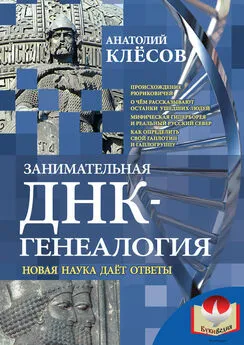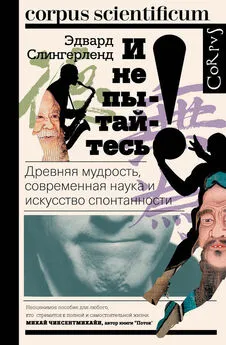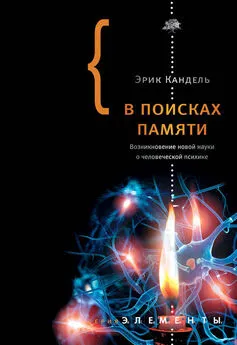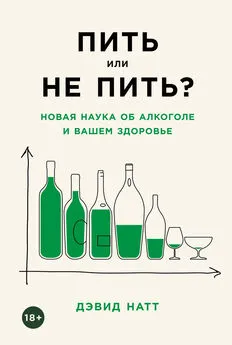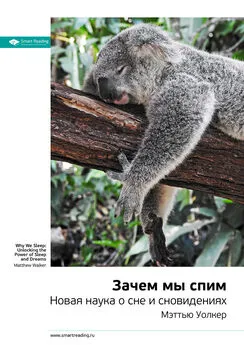Дэвид Райх - Кто мы и как сюда попали [Древняя ДНК и новая наука о человеческом прошлом]
- Название:Кто мы и как сюда попали [Древняя ДНК и новая наука о человеческом прошлом]
- Автор:
- Жанр:
- Издательство:Литагент Corpus
- Год:2020
- Город:М.
- ISBN:978-5-17-118990-7
- Рейтинг:
- Избранное:Добавить в избранное
-
Отзывы:
-
Ваша оценка:
Дэвид Райх - Кто мы и как сюда попали [Древняя ДНК и новая наука о человеческом прошлом] краткое содержание
В своей книге Райх наглядно показывает, сколько скрытой информации о нашем далеком прошлом содержит человеческий геном и как радикально геномная революция меняет наши устоявшиеся представления о современных людях. Миграции наших предков, их отношения с конкурирующими видами, распространение культур – все это предстает в совершенно ином свете с учетом данных по ДНК ископаемых останков. Анализ научных открытий и исследований ведет к провокационной мысли: по всей видимости, различия между нынешними популяциями – биологическая реальность, однако с привычными стереотипами она не имеет ничего общего. Вопрос, кто же мы такие и откуда взялись, приходится ставить заново. Ответ еще в процессе формирования, но шаблоны уже трещат по швам.
Кто мы и как сюда попали [Древняя ДНК и новая наука о человеческом прошлом] - читать онлайн бесплатно ознакомительный отрывок
Интервал:
Закладка:
13 N. A. Garrison, M. K. Cho. “Awareness and Acceptable Practices: IRB and Researcher Reflections on the Havasupai Lawsuit”, AJOB Primary Research 4 (2013): 55–63; A. Harmon. “Indian Tribe Wins Fight to Limit Research of Its DNA”, New York Times, April 21, 2010.
14 Ronald P. Maldonado. “Key Points for University Researchers When Considering a Research Project with the Navajo Nation”, http://nptao.arizona.edu/sites/nptao/files/navajonationkey- researchrequirements_0.pdf
15 R. Skloot. The Immortal Life of Henrietta Lacks (New York: Crown, 2010).
16 B. L. Shelton. “Consent and Consultation in Genetic Research on American Indians and Alaska Natives”, http://www.ipcb.org/publi- cations/briefing_papers/files/consent.html.
17 R. R. Sharp, M. W. Foster. “Involving Study Populations in the Review of Genetic Research”, Journal of Law, Medicine and Ethics 28 (2000): 41–51; International HapMap Consortium. “The International HapMap Project”, Nature 426 (2003): 789–796.
18 T. Egan. “Tribe Stops Study of Bones That Challenge History”, New York Times, September 30, 1996; D. W. Owsley, R. L. Jantz. Kennewick Man: The Scientific Investigation of an Ancient American Skeleton (College Station: Texas A&M University Press, 2014); D. J. Meltzer. “Kennewick Man: Coming to Closure”, Antiquity 348 (2015): 1485–1493.
19 M. Rasmussen et al. “The Ancestry and Affiliations of Kennewick Man”, Nature 523 (2015): 455–458.
20 Там же.
21 J. Lindo et al. “Ancient Individuals from the North American Northwest Coast Reveal 10,000 Years of Regional Genetic Continuity”, Proceedings of the National Academy of Sciences of the U.S.A. 114 (2017): 4093–4098.
22 S. J. Redman. Bone Rooms: From Scientific Racism to Human Prehistory in Museums (Cambridge, MA, and London: Harvard University Press, 2016).
23 M. Rasmussen et al. “An Aboriginal Australian Genome Reveals Separate Human Dispersals into Asia”, Science 334 (2011): 94–98.
24 Rasmussen et al. “Genome of a Late Pleistocene Human”.
25 Rasmussen et al. “Ancestry and Affiliations of Kennewick Man”.
26 A. S. Malaspinas et al. “A Genomic History of Aboriginal Australia”, Nature 538 (2016): 207–214.
27 E. Callaway. “Ancient Genome Delivers ‘Spirit Cave Mummy’ to US tribe”, Nature 540 (2016): 178–179.
28 Там же.
29 M. Livi-Bacci. “The Depopulation of Hispanic America After the Conquest”, Population and Development Review 32 (2006): 199–232; L. H. Morgan. Ancient Society; Or, Researches in the Lines of Human Progress from Savagery Through Barbarism to Civilization (Chicago: Charles H. Kerr, 1909).
30 Reich et al. “Reconstructing Native American Population History”.
31 Lindo et al. “Ancient Individuals”.
32 L. Campbell, M. Mithun. The Languages of Native America: Historical and Comparative Assessment (Austin: University of Texas Press, 1979).
33 L. Campbell. “Comment on Greenberg, Turner and Zegura”, Current Anthropology 27 (1986): 488.
34 P. Bellwood. First Migrants: Ancient Migration in Global Perspective (Chichester, West Sussex, UK / Malden, MA: Wiley-Blackwell, 2013).
35 Reich et al. “Reconstructing Native American Population History”.
36 W. A. Neves, M. Hubbe. “Cranial Morphology of Early Americans from Lagoa Santa, Brazil: Implications for the Settlement of the New World”, Proceedings of the National Academy of Sciences of the U.S.A. 102 (2005): 18309–18314.
37 Rasmussen et al. “Ancestry and Affiliations of Kennewick Man”.
38 P. Skoglund et al. “Genetic Evidence for Two Founding Populations of the Americas”, Nature 525 (2015): 104–108.
39 Povos Indígenas No Brasil. “Surui Paiter: Introduction”, https://pib.socioambiental.org/en/povo/surui-paiter; R. A. Butler. “Amazon Indians Use Google Earth, GPS to Protect Forest Home”, Mongabay: News and Inspiration from Nature’s Frontline, November 15, 2006, https://news.mongabay.com/2006/11/amazon-indians-use-googleearth-gps-to-protect-forest-home/
40 “Karitiana: Biopiracy and the Unauthorized Collection”.
41 Povos Indígenas No Brasil. “Xavante: Introduction”, https://pib.socioambiental.org/en/povo/xavante
42 M. Raghavan et al. “Genomic Evidence for the Pleistocene and Recent Population History of Native Americans”, Science 349 (2015): aab3884.
43 E. J. Vajda. “A Siberian Link with Na-Dene Languages”, in Anthropological Papers of the University of Alaska: New Series, ed. James M. Kari and Ben Austin Potter, 5 (2010): 33–99.
44 Reich et al. “Reconstructing Native American Population History”.
45 M. Rasmussen et al. “Ancient Human Genome Sequence of an Extinct Palaeo-Eskimo”, Nature 463 (2010): 757–762.
46 M. Raghavan et al. “The Genetic Prehistory of the New World Arctic”, Science 345 (2014): 1255832.
47 P. Flegontov et al. “Paleo-Eskimo Genetic Legacy Across North America”, bioRxiv (2017): doi.org/10.1101.203018.
48 Flegontov et al. “Paleo-Eskimo Genetic Legacy”.
49 T. M. Friesen. “Pan-Arctic Population Movements: The Early Paleo-Inuit and Thule Inuit Migrations” in: The Oxford Handbook of the Prehistoric Arctic, ed. T. Max Friesen and Owen K. Mason (New York: Oxford University Press, 2016), 673–692.
50 Reich et al. “Reconstructing Native American Population History”.
51 J. Diamond, P. Bellwood. “Farmers and Their Languages: The First Expansions”, Science 300 (2003): 597–603; P. Bellwood. First Farmers: The Origins of Agricultural Societies (Malden, MA: Blackwell, 2005).
52 R. R. da Fonseca et al. “The Origin and Evolution of Maize in the Southwestern United States”, Nature Plants 1 (2015): 14003.
Глава 8. Генетические корни восточных азиатов
1 X. H. Wu et al. “Early Pottery at 20,000 Years Ago in Xianrendong Cave, China”, Science 336 (2012): 1696–1700.
2 R. X. Zhu et al. “Early Evidence of the Genus Homo in East Asia”, Journal of Human Evolution 55 (2008): 1075–85.
3 C. C. Swisher III et al. “Age of the Earliest Known Hominids in Java, Indonesia”, Science 263 (1994): 1118–1121; P. Bellwood. First Islanders: Prehistory and Human Migration in Island Southeast Asia (Oxford: Wiley-Blackwell, 2017).
4 D. Richter et al. “The Age of the Hominin Fossils from Jebel Irhoud, Morocco, and the Origins of the Middle Stone Age”, Nature 546 (2017): 293–296; J. G. Fleagle, Z. Assefa, F. H. Brown, J. J. Shea. “Paleoanthropology of the Kibish Formation, Southern Ethiopia: Introduction”, Journal of Human Evolution 55 (2008): 360–365.
5 T. Sutikna et al. “Revised Stratigraphy and Chronology for Homo floresiensis at Liang Bua in Indonesia”, Nature 532 (2016): 366–369.
6 Y. Ke et al. “African Origin of Modern Humans in East Asia: A Tale of 12,000 Y Chromosomes”, Science 292 (2001): 1151–1153.
7 J. Qiu. “The Forgotten Continent: Fossil Finds in China Are Challenging Ideas About the Evolution of Modern Humans and Our Closest Relatives”, Nature 535 (2016): 218–220.
8 R. J. Rabett, P. J. Piper. “The Emergence of Bone Technologies at the End of the Pleistocene in Southeast Asia: Regional and Evolutionary Implications”, Cambridge Archaeological Journal 22 (2012): 37–56; M. C. Langley, C. Clarkson, S. Ulm. “From Small Holes to Grand Narratives: The Impact of Taphonomy and Sample Size on the Modernity Debate in Australia and New Guinea”, Journal of Human Evolution 61 (2011): 197–208; M. Aubert et al. “Pleistocene Cave Art from Sulawesi, Indonesia”, Nature 514 (2014): 223–227.
9 Langley, Clarkson, Ulm. “From Small Holes to Grand Narratives”; J. F. Connell, J. Allen. “The Process, Biotic Impact, and Global Implications of the Human Colonization of Sahul About 47,000 Years Ago”, Journal of Archaeological Science 56 (2015): 73–84.
10 J.-J. Hublin. “The Modern Human Colonization of Western Eurasia: When and Where?”, Quaternary Science Reviews 118 (2015): 194–210.
11 R. Foley, M. M. Lahr. “Mode 3 Technologies and the Evolu tion of Modern Humans”, Cambridge Archaeological Journal 7 (1997): 3–36.
12 M. M. Lahr, R. Foley. “Multiple Dispersals and Modern Human Origins”, Evolutionary Anthropology 3 (1994): 48–60.
13 H. Reyes-Centeno et al. “Testing Modern Human Out-ofAfrica Dispersal Models and Implications for Modern Human Origins”, Journal of Human Evolution 87 (2015): 95–106.
14 H. S. Groucutt et al. “Rethinking the Dispersal of Homo sapiens Out of Africa”, Evolutionary Anthropology 24 (2015): 149–164.
15 R. Grün et al. “U-series and ESR Analyses of Bones and Teeth Relating to the Human Burials from Skhul”, Journal of Human Evolution 49 (2005): 316–334.
16 S. J. Armitage et al. “The Southern Route ‘Out of Africa’: Evidence for an Early Expansion of Modern Humans into Arabia”, Science 331 (2011): 453–456; M. D. Petraglia. “Trailblazers Across Africa”, Nature 470 (2011): 50–51.
17 M. Kuhlwilm et al. “Ancient Gene Flow from Early Modern Humans into Eastern Neanderthals”, Nature 530 (2016): 429–433.
18 M. Rasmussen et al. “An Aboriginal Australian Genome Reveals Separate Human Dispersals into Asia”, Science 334 (2011): 94–98.
19 D. Reich et al. “Genetic History of an Archaic Hominin Group from Denisova Cave in Siberia”, Nature 468 (2010): 1053–1060;
M. Meyer et al. “A High-Coverage Genome Sequence from an Archaic Denisovan Individual”, Science 338 (2012): 222–226.
20 S. Mallick et al. “The Simons Genome Diversity Project: 300 Genomes from 142 Diverse Populations”, Nature 538 (2016): 201–206.
21 Q. Fu et al. “Genome Sequence of a 45,000-Year-Old Modern Human from Western Siberia”, Nature 514 (2014): 445–449; S. Sankararaman, S. Mallick, N. Patterson, D. Reich. “The Combined Landscape of Denisovan and Neanderthal Ancestry in PresentDay Humans”, Current Biology 26 (2016): 1241–1247; P. Moorjani et al. “ A Genetic Method for Dating Ancient Genomes Provides a Direct Estimate of Human Generation Interval in the Last 45,000 Years”, Proceedings of the National Academy of Sciences of the U.S.A. 113 (2016): 5652–5627.
22 Mallick et al. “Simons Genome Diversity Project”; M. Lipson, D. Reich. “A Working Model of the Deep Relationships of Diverse Modern Human Genetic Lineages Outside of Africa”, Molecular Biology and Evolution 34 (2017): 889–902.
23 Mallick et al. “Simons Genome Diversity Project”; A. S. Malaspinas et al. “A Genomic History of Aboriginal Australia”, Nature 538 (2016): 207–214; L. Pagani et al. “Genomic Analyses Inform on Migration Events During the Peopling of Eurasia”, Nature 538 (2016): 238–242.
24 Hublin. “Modern Human Colonization of Western Eurasia”.
25 M. Raghavan et al. “Upper Palaeolithic Siberian Genome Reveals Dual Ancestry of Native Americans”, Nature (2013): doi: 10.1038/nature12736.
26 Hugo Pan-Asian SNP Consortium. “Mapping Human Genetic Diversity in Asia”, Science 326 (2009): 1541–45.
27 S. Ramachandran et al. “Support from the Relationship of Genetic and Geographic Distance in Human Populations for a Serial Founder Effect Originating in Africa”, Proceedings of the National Academy of Sciences of the U.S.A. 102 (2005): 15942–15947; B. M. Henn, L. L. Cavalli-Sforza, M. W. Feldman. “The Great Human Expansion”, Proceedings of the National Academy of Sciences of the U.S.A. 109 (2012): 17758–17764.
Читать дальшеИнтервал:
Закладка:
![Обложка книги Дэвид Райх - Кто мы и как сюда попали [Древняя ДНК и новая наука о человеческом прошлом]](/books/1066346/devid-rajh-kto-my-i-kak-syuda-popali-drevnyaya-dnk-i.webp)

